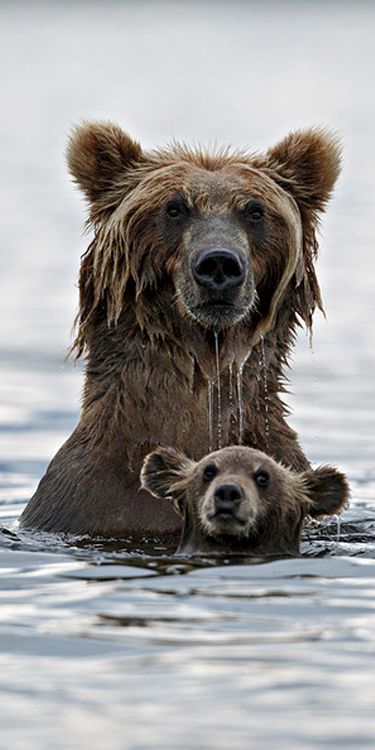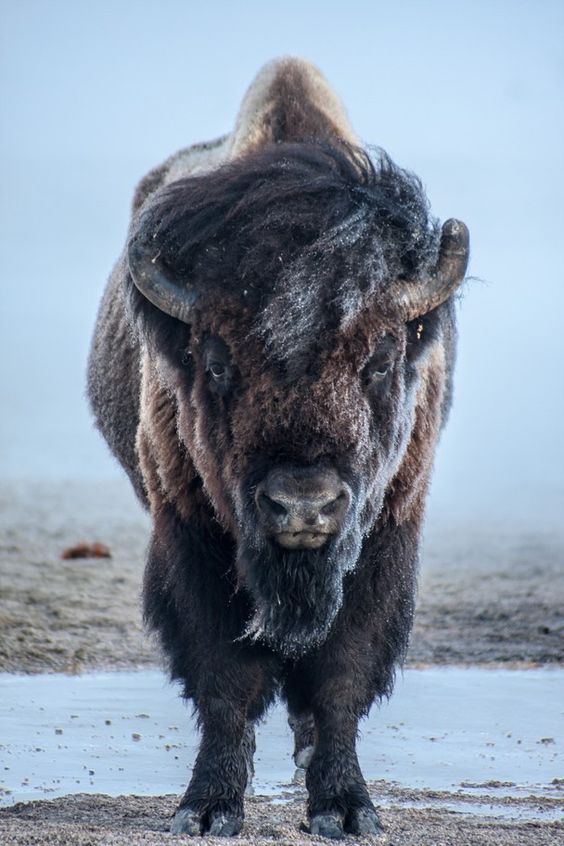Things You Need To Know About Wild Animals Encounters
Wildlife can be very unpredictable. Although these encounters are typically very rare, it is still important that people are aware of their surroundings and use common sense when necessary. Every animal responds differently to human interaction, so it is crucial that you are always prepared and looking for signs of alarm. Whether the animal gives verbal clues, puts its ears back, or scrapes its paws, all wildlife will give you some sort of sign. As a general rule of thumb: if the animal is reacting to you, you’re too close.
To get you started, here is a list of just a few of the various wild animals out there, and tips for if you should happen to encounter one of them in the great outdoors.

Bear: The first thing you need to do when you see a bear is figure out what type of bear it is. If it is a smaller bear - only about 300 pounds - it is a black bear. If it is much larger than this - 900-1200 pounds - it is most likely a grizzly bear or brown bear. If it is a black bear that you’re dealing with, making noise and throwing sticks will probably scare it off. If it is a grizzly bear or brown bear that you encounter, you probably have a bit more to worry about, as these types are attracted to noise and commotion.
If the bear is far away or doesn’t see you, turn around and go the other way or circle very far around it. Try your hardest not to disturb it.
If it does see you, stay calm. Bear are usually not aggressive animals, so bear attacks are quite rare. Stand your ground and make yourself look as big and tall as possible. If it approaches you, wave your arms and speak in a loud, low voice, but whatever you do - DO NOT RUN! Back away slowly and diagonally. If the bear follows you, just stop and stand your ground again.
If these tactics don’t work and the bear doesn’t seem to be discouraged, curl up in a ball with your hands laced behind your neck. Lying in the fetal position protects your vital organs in case of an attack. Play dead. Lie as still and as silent as possible, as bears usually stop attacking when they think their threat is dead.

Mountain Lion: Human attacks by mountain lions are very rare as they normally prey on elk and deer. Danger can arise, though, when people encounter these animals by themselves or with small, noisy children, as they mimic prey this way.
Know that peak times for mountain lion activity are at dawn and dusk. These are the times that you want to be sure to walk or hike in groups. If you do end up walking or hiking alone, attach a bell to yourself to make the cougars aware that you are near. Consider carrying bear spray as well, just in case.
If you encounter a mountain lion that does not run away, stay calm and stand your ground.
DO: Back away slowly, raise your voice and speak firmly, raise your arms to make yourself look larger, clap your hands, or throw something you may have in your hands.
DO NOT: Bend down, turn your back, or run.
In the very unusual event that a mountain lion does attack you, fight back. Try to remain standing at all times, and always get back up if you fall down. Reach for anything around you that can be used as a weapon.

Bison: These are the largest indigenous land mammals in North America, weighing as much as one ton. Bison are also extremely fast, as they can quickly accelerate to up to 35 mph. As a rule of thumb, always try to stay at least 100 meters away.
If you encounter bison in the road, do not honk or speed up; just drive slowly and it will eventually move. Bison attacks on vehicles are rare, but not unheard of.
If you are on foot, never startle bison or try to chase or scare it away. Always let it know that you are there, and just cautiously and slowly walk away.
Keep in mind that bison may be more aggressive during the following times: rutting season (mid July-mid August), after bison calves are just born, and on hot spring days when bison still have heavy winter coats. In addition, be on the lookout for any of the following signs: shaking the head, pawing, short chargers or running toward you, loud snorting, and raising the tail.

Shark: Although shark attacks are relatively rare, shark sightings are on the rise. Therefore, it is important that you are prepared for what to do if you should happen to see one of these swimming near you in the ocean.
When you first encounter a shark, the #1 rule is: Do not panic! Screaming and flailing about is more likely to gain its attention than to avoid it. Your best chance of avoiding an attack is to play dead, as a shark is more likely to go after a lively target than a dead one.
If this doesn’t work and the shark does attack, your only chance of getting out alive is to fight back, so NOW would be the time to start flailing. Look for anything you can use as a weapon and know that sharks have several weak areas, including the snout, the gills, and the eyes. And of course, yell as loud as you can for back up.





















